Say you have an excel file with a bunch of numbers and rows, about 100 rows.
I want to programatically write a column with a formula that adds the values of a bunch of fields together for each existing row.
So first of all, of course, I would create the Openfiledialog for the Excel file, find the path, open it up through OleDb. Got this down. Now say I have the following table:
[Friends | Money | Money Lost | Days passed | Solution]
Bilbo , 50 , 50 , 7 , *Formula here
Bilso , 80 , 50 , 7 , *Formula here
etc...
Problem is, I don't have an exact number for the rows so I'll have to enumerate whatever is found by the OleDb connection. The formula would be something like =(B2-C2)*D2 but 2 is also wrong and it would have to be relative to whatever row it's on, ie: row 3 would be =(B3-C3)*D3. I'm not sure how to do this.
I found out writing directly to the cell also doesn't make the formula process the numbers outright.
=====
EDIT:
private Excel.Application Xls;
private Excel.Workbooks WBs;
private Excel.Workbook WB;
private Excel.Worksheet WS;
private Excel.Sheets SS;
Excel.Range cellsRange = null;
Excel.Range columnRange = null;
Excel.Range rowRange = null;
int numberOfColumns = 0;
int numberOfRows = 0;
private void btnColumn_Click(object sender, EventArgs e)
{
if (btnColumn.FlatStyle == FlatStyle.Flat)
btnColumn.FlatStyle = FlatStyle.Standard;
else
{
btnColumn.FlatStyle = FlatStyle.Flat;
}
OpenFileDialog openFileDialog = new OpenFileDialog();
openFileDialog.Filter = "Excel Files|*.xls;*.xlsx";
openFileDialog.ShowDialog();
string pather = openFileDialog.FileName;
if (pather == "" || pather == " " || pather == null)
{
return;
}
if (!string.IsNullOrEmpty(openFileDialog.FileName))
{
try
{
Xls = new Excel.Application();
WBs = Xls.Workbooks;
WB = WBs.Open(pather, 0, false, 5, "", "", true,
XlPlatform.xlWindows, "\t", false, false, 0, true, 1, 0);
SS = WB.Worksheets;
WS = SS.get_Item(1);
cellsRange = WS.Cells;
columnRange = cellsRange.Columns;
rowRange = cellsRange.Rows;
numberOfColumns = columnRange.Count;
numberOfRows = rowRange.Count;
int LastCell = numberOfColumns+1;
WS.Cells[1, LastCell] = "Tax Formula";
for (int i = 2; i < numberOfRows; i++)
{
//string niceFormula = "=SUM(L" + i + ",M" + i + ")*N"+ i ;
//WS.Cells[i, LastCell].Formula = niceFormula;
WS.Cells[i, LastCell].Value = (WS.Cells[i, 12] + WS.Cells[i, 13]) * WS.Cells[i, 14];
}
//==========================
WB.Save();
}
catch (Exception ex)
{
MessageBox.Show("Write Excel: " + ex.Message);
}
finally
{
GC.Collect();
GC.WaitForPendingFinalizers();
WB.Close();
Xls.Quit();
releaseObject(cellsRange);
releaseObject(columnRange);
releaseObject(rowRange);
releaseObject(SS);
releaseObject(WS);
releaseObject(WBs);
releaseObject(WB);
releaseObject(Xls);
}
MessageBox.Show("Finished Updating File", "Task complete");
}
}
Anyone know why this code is throwing the following error on write attempt?
HRESULT: 0x800A03EC
Repasted entire code for your convenience. It's still spitting out the HRESULT error.
Targeted item is 4 rows deep with 1 row of headers and about 16 columns wide.

